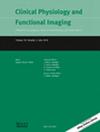Correlation between antihypertensive drugs and cerebral hemodynamic parameters: insights from observational findings using transcranial Doppler
Abstract
Background
Antihypertensives (AHD) can influence cerebral autoregulation (CA) and attenuate hypertrophic concentric remodelling of arterioles. The aim of this study was to examine the associations between AHD, CA and structural and functional properties of cerebral arteries.
Methods
In this observational, cross-sectional study 115 volunteers were divided in group 1 (non-hypertensive) [n = 30]; group 2 (hypertensive with systolic blood pressure [SBP] < 140 and diastolic blood pressure [DBP] < 90 mmHg) [n = 54]; group 3 (hypertensive with SBP ≥ 140 or DBP ≥ 90 mmHg) [n = 31] and simultaneous measurements of systemic blood pressure (BP) and middle cerebral artery blood flow velocity (CBFV) were obtained from digital plethysmography and transcranial Doppler. Beat-to-beat, critical closing pressure (CrCP), resistance-area product (RAP) and autoregulation index (ARI) values were extracted by linear regression analysis of instantaneous BP and CBFV waveforms using computerised analysis. Pulsatility index (PI) was calculated and CO2 reactivity was assessed by the breath-holding test.
Results
Despite their higher RAP (1.7 [±0.7], p < 0.001) compared to groups 1 and 2, uncontrolled hypertensive using diuretics (p = 0.047) and α2-agonists (p = 0.009) had significantly lower PI. Impaired CO2 reactivity was common between the two hypertensive groups (p = 0.008), however ARI, CrCP and CBFV did not differ between them and non-hypertensive individuals and also did not correlate with any AHD used.
Conclusions
Unlike the RAP, PI does not seem to reflect the real cerebrovascular resistence resulting from chronic arterial remodelling. Despite impaired CO2 reactivity, hypertensive have arterial tonus and CA comparable to non-hypertensive. Experimental studies involving an untreated hypertensive control group are required to robustly make definitive conclusions about these questions.

 求助内容:
求助内容: 应助结果提醒方式:
应助结果提醒方式:


